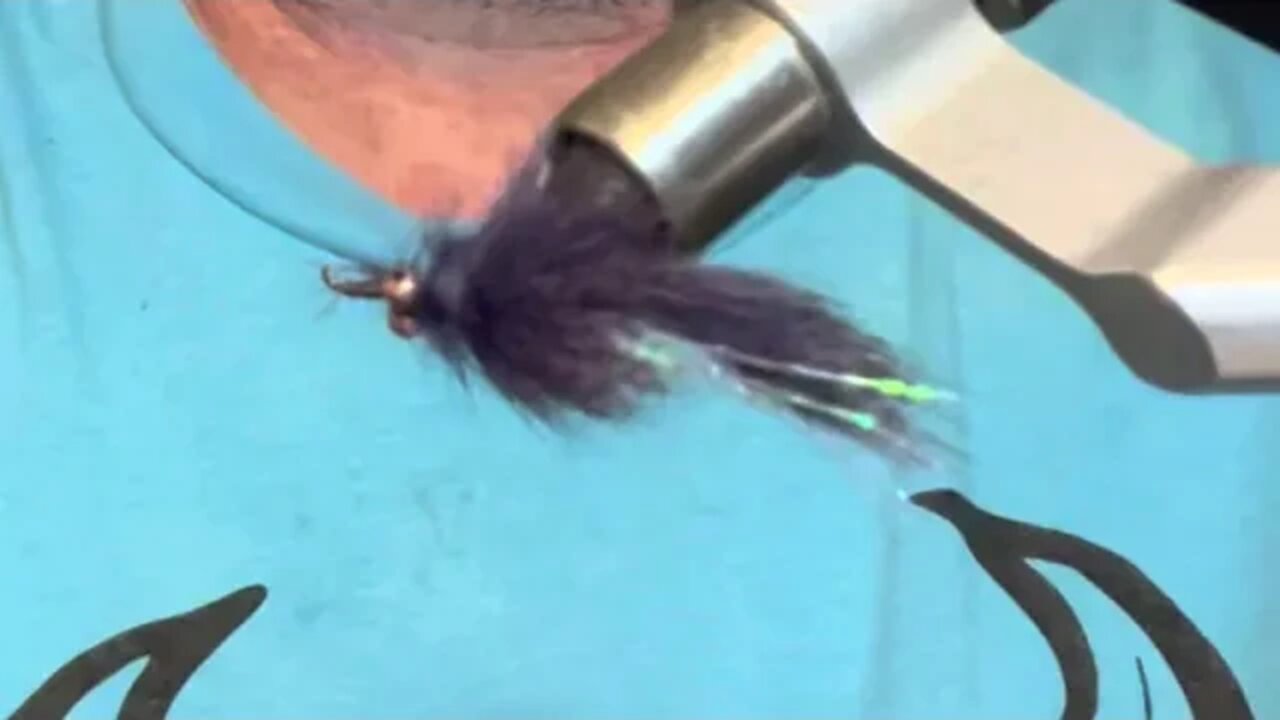Premium Only Content

#10 Hook Purple Leech
FISHING LEECH PATTERNS
Every angler knows that there are many leech patterns in the market for fly fishing. After all, leeches are everywhere, and even in ponds with a few leeches, a lively pattern designed to imitate leeches can help you catch something. Remember, some fly tying materials like mohair, soft feathers, fur, and marabou can help your bait stand out. (source)
But for the bait to attract something, there are a few factors you have to consider when picking the right leech fly pattern. Some of the few things that you have to consider when tying the correct leech pattern are:
1) Weight
For the leech pattern to have a faster sinking rate, its weight must be near or on the fly’s head. Remember, leeches swim in an undulating manner; therefore, adding the weight near the head will help imitate this movement. So the metal bead is either positioned on its head or the first third of the shank before adding the feathers, yarn, and fur.
2) The Length of the Pattern
Leeches have a long-segmented body; therefore, you can only attract the fish by ensuring it has an elongated body. In a pond with lots of leeches, the length of the bait matters a lot. It will guarantee that it sinks while imitating the leeches’ movements. (source)
3) Profile
Besides the standard shape and length of the leech pattern, you need to add an indicator that can help you attract the fish. In most cases, the bait’s color can do the job for you, but in some cases, you will have to add some feathers, yarn, or fur to your bait. (source)
Some leech fly patterns have both an exceptional color and feathers. Still, the colors have to resemble the different leech species.
THE BEST LEECH FLY PATTERNS
It is crucial that you understand that many kinds of leech patterns in the market can help you fish. Unfortunately, not all leech fly patterns are easy to tie or cast; some, especially the ones with a poor profile, have a meager sinking rate. So here are some of the best leech fly patterns in the market that I always use when fly fishing:
1) Bunny Leech
The Bunny fly leech is a unique pattern that works for a wide range of fish species like bass, trout, salmon, and steelhead. The bunny feather used to make this pattern come to life when cast into the water.
Remember, it is usually tied using a few flash strands that help attract some trophy fish species in the lakes. A bunny leech won’t suck your blood, but it will capture some fish.
The bunny leech is the most straightforward pattern to tie; all you need is bunny fur, hook, and string. And the fact that you need very few materials to tie this pattern is a bonus. You can use the same material to create the tail and the head of the bunny leech.
To add weight to the hook’s shank, you can add a bead. But the fur tends to soak in water when sinking, which will help it fall even faster than usual.
Plus, you can create a light dressing pattern by preparing a narrower strip and some natural colors. The bunny leech fly pattern is ideal for bright days and spring fishing. So when the lake is frigid during spring, you can fish the pattern using either dead drift or light retrieves.
Give it time to sink, and its tail will surprise you. But you have to be very aggressive when the water becomes warm. Plus, you can tie the pattern in a wide range of colors, including chartreuse, which is ideal for catching bass and trout. (source)
2) Marabou Leech
Another exceptional leech pattern that lots of anglers love to fish with is the marabou leech pattern. The good thing about this leech fly pattern and what makes it effective like the Wooly Bugger is that it has a segmented body just like a leech.
The marabou and segmented body combination create an ideal undulating motion when cast.
Marabou leech is a still water fly, but it can work in other work in some slow-moving rivers. Luckily, you can tie the marabou leech using all the available leech colors.
Still, most anglers love imitating the black leeches. You can also try red, brown, gray, olive, and maroon as well. (source)
To add weight to your fly, you can add a cement-coated thread head. You can improve its weight and flash to its profile by adding an imitation lead and a bead head on the front part of the hook.
The additional weight will help you fish deeper in the water and create movement when sinking.
To tie this leech fly, you will need a straight or curved shaped hook, lead wire, and thread. The lead wire can come in handy when ribbing and adding weight to the leech fly. You need one marabou feather with a thin stem and feather fibers for this fly. Fluffy feathers don’t work well with marabou leech fly.
#flyfishing #fishing #flytying #catchandrelease #trout #troutfishing #flyfishingaddict #browntrout #fish #fishinglife #flyfishingjunkie #flyfishinglife #rainbowtrout #flytyingjunkie #outdoors #troutbum #flyfishingnation #nature #bassfishing #flytyingaddict #fishingtrip #flugfiske #flyfishingphotography #onthefly #pesca #an
-
 1:10:49
1:10:49
Vigilant News Network
4 hours agoRFK Jr. Drops a Stunning Announcement | The Daily Dose
22.7K18 -
 49:49
49:49
Candace Show Podcast
7 hours agoEXCLUSIVE: Blake & Ryan’s Desperate Legal Strategy Exposed! | Candace Ep 147
137K119 -
 1:32:20
1:32:20
2 MIKES LIVE
4 hours ago2 MIKES LIVE #180 with guest Kyle Rittenhouse!
23.1K2 -
 9:40
9:40
Tactical Advisor
9 hours agoBest Home Defense Shotgun Build | Genesis Gen 12
22.2K -
 56:44
56:44
VSiNLive
6 hours ago $3.15 earnedFollow the Money with Mitch Moss & Pauly Howard | Hour 1
52.7K1 -
 1:05:48
1:05:48
The Amber May Show
9 hours ago $2.11 earnedBig Balls | You Know It's Bad When Legacy Media Reports On Big Balls | Sam Anthony
26.1K6 -
 LIVE
LIVE
SoniCentric
1 day agoEnjoy a COZY Valentine's Day Escape to Paris with the BEST blend of Romantic Music
119 watching -
 1:59:52
1:59:52
Revenge of the Cis
7 hours agoEpisode 1447: Love Train
54.9K7 -
 1:03:34
1:03:34
In The Litter Box w/ Jewels & Catturd
1 day agoCONFIRM KASH NOW! | In the Litter Box w/ Jewels & Catturd – Ep. 742 – 2/14/2025
76.8K51 -
 13:38
13:38
Simply Bitcoin
14 hours ago $5.58 earnedFED’s Worst NIGHTMARE Just Got WORSE | $13M Bitcoin is Coming!
87.3K6